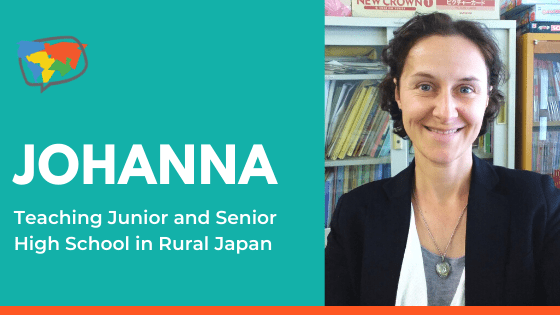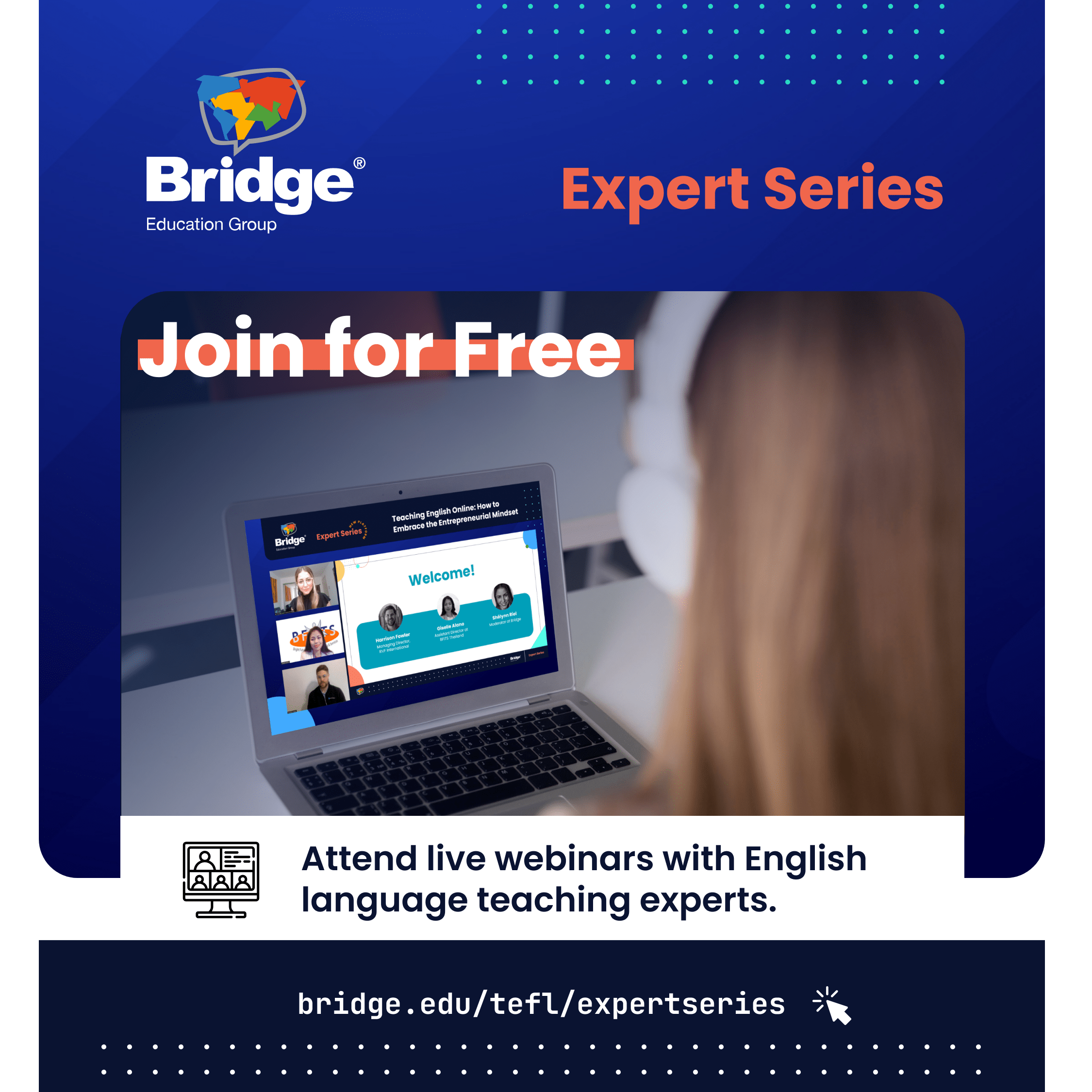Johanna is an Applied Cultural Sciences graduate whose passion for travel and other cultures led her from her home country of Germany to Australia, New Zealand, and twice to Japan, where she currently teaches English at a junior and senior high school. In this interview, she tells us about her various jobs teaching English over the years, the EFL children’s books she’s created, and how the recent COVID-19 measures have changed the teaching landscape in Japan.
Johanna, tell us a bit about your background and how you got into teaching English.
Twelve years ago, while on a Working Holiday adventure in Australia, I met my now-husband, who is Japanese. After one and a half years of Working Holiday and ending up writing my final paper for university in Australia, we decided to go to his home country together.
I did my research and I found out that Japan is a great country to teach abroad and start a TEFL/TESOL career. It seemed like the perfect choice since I had just finished my studies in Applied Cultural Sciences with a focus on Language and Communication.
What was your first English teaching job and how did you find it?
When I first came to Japan in 2010, I started working part-time at a local private language school in Saitama city. I taught English conversation classes to students of all ages, my oldest student being a lovely 60-year old lady. At that school, I met an English teacher from America who was also working as an Assistant Language Teacher at a public junior high school for the Saitama City Board of Education. He introduced me to the board members and I interviewed with them for a job opening.
I got the job and started teaching part-time at a public junior high school and also at a public elementary school. I worked those two jobs until my husband and I moved to New Zealand.
The community of global teachers in Japan is quite strong and you never know who you meet or what new paths will open for you. I couldn’t have done it without the amazing support from the people I met back then.
Where are you teaching now and how long have you been there?
I am currently teaching English in Japan in a rural area. The town is called Matsudo in Chiba prefecture. I have lived in Chiba since 2013, so since we returned to Japan. This was my first year at my current school and I will stay for at least another two years to complete my contract. After mainly working in metropolitan Tokyo for the past years, I am really happy to be commuting within Chiba and working at a more rural location. I grew up in the countryside of Northern Germany, so I love the rural scenery here.

The junior and senior high school where Johanna works in rural Chiba, Japan
Tell us what your job is like.
Work starts at eight in the morning and I finish at five in the afternoon. All students and teachers eat lunch together in the big cafeteria. I teach around 20 lessons per week, mainly team-teaching with a Japanese teacher of English. I join the regular English classes in junior high school and I teach communication classes in high school. We also have Online English classes, where I mainly support the students when they need help.
What do you like most about your job?
The things I love most are the weeks we spend practicing for the yearly English Drama Contest, preparing for the school festival, training for Sports Day, or going on a school trip with the junior high school, which are times where I can connect with the students on a deeper level and give them a chance to use their English in real situations.
Being part of the regular school life of Japanese teenagers is very different from teaching individual conversation classes or taking care of toddlers in an English immersion homeroom, so it was quite a change for me.
How did you choose your TEFL courses (the Master Certificate and Specialized Certificates in Teaching English to Teenagers and Designing Custom Courses)?
In 2010/2011, during my first year in Japan, it was not necessarily required to have any TEFL certification in order to teach English, so I focused on learning on the job. After we moved to New Zealand for two years and came back to Japan in 2013, however, finding a job without any certificate had already become harder, especially as a non-native English speaker. I managed to get a job at an international preschool and I decided to focus on young learners.
It was really hard without any experience in teaching small children or any professional development training, though. Maybe this is why after five years of struggling, I eventually decided to move on in my career and focus on teenagers and young adults instead. To avoid making the same mistake, I decided to take my professional development into my own hands, so I looked for online TEFL courses to get an accredited TEFL/TESOL certificate.
By now, teaching certificates are often required in Japan, so in case I want to change my job in the future, I wanted to earn a certificate that wouldn’t expire, had a good accreditation, and was internationally recognized. This is how I chose all three Bridge TEFL courses.
Have those trainings been helpful to you as a teacher?
Definitely. Since my daily work environment is in a Japanese language setting, I do not get many opportunities for professional development in English. Completing the 120-hour Master Certificate has increased my confidence as a teacher and given me a solid professional foundation. Adding the Specialized Certificate in Teaching English to Teenagers was a logical choice for my current job and it has significantly improved my classroom management skills, as well as my lesson plan and material development skills.
Teenagers can be challenging and hard to motivate, but I was immediately able to apply what I had learned to my own classrooms with great success. The latest course I completed, Designing Custom Courses, has helped me to tailor my lessons to the needs of each class that I teach and to think outside the box more often.
You claimed your Bridge digital badges for the courses you’ve completed. Was it difficult to do? Where have you shared those?
Claiming the digital badges was really exciting, to be honest, and really easy to do since they come with step-by-step instructions on how to claim them. Every time I completed a course, I felt really proud of my achievement when I printed out my updated Bridge certificate and when I claimed my new digital badge. I shared all three badges on my LinkedIn profile, which is what I use for professional networking. It looks great and employers can immediately see them when they look at my profile!

Learn more about using LinkedIn and digital badges to stand out for TEFL jobs.
How has being a non-native English speaker influenced your teaching approach?
I think being a non-native English speaking teacher has quite a few advantages, actually.
Having learned English at school myself allows me to understand my students’ difficulties and struggles with the English language better. I can be more empathic, patient, and I can also anticipate certain problems with specific grammar points, for example. Also, when my students and I come across a technical term none of us know, we can work on it and learn the meaning together. Being imperfect, and being transparent about it, creates a strong bond and builds trust with your students.
Another advantage is that I can explain grammar points, structures, functions, and even vocabulary very well because they have been explained to me when I was a student. I often notice that native English speakers have difficulties explaining grammar because they never consciously learned it.
You’ve written and illustrated two EFL learning books for children! Can you tell us more?
I got the inspiration while I was teaching English to young learners at international preschools. We always had a morning circle with storytime. That was my favorite moment of the day because the kids are so engrossed in the pictures and the stories and they get really excited about turning the pages to see what happens next.
I have loved drawing and crafting all my life, so I thought, what if I wrote and illustrated my own EFL books, using my experience with the kids? I created two main characters based on my two cats at home, and things just went from there.

Johanna’s two main characters of her EFL learning books
So far, I have only printed individual samples to give to my friends and colleagues, but I would love to explore some future opportunities in material development for young learners and teenagers.

The prototypes of Johanna’s two EFL learning books
The world is currently affected by the COVID-19 pandemic, and Japan is no exception. How has the virus impacted school life in Japan?
I remember when it all started to become more serious and more and more measures and guidelines were put into place. First, it was mainly about keeping a strict hygiene protocol at school. However, soon gatherings of more than 100 students were restricted, we ate lunch separated by classes, and eventually, middle schools had to close weeks before the spring break.
We had to cancel the remaining classes and limit important events such as graduation ceremonies. The annual spring high school baseball tournament has been canceled too, for the first time in history. I feel very sorry for all the students who are missing out on their big day this year.
Do you think there will be a change concerning classroom settings?
At my school, we gave homework assignments to our students, which they will hand in through the school’s online network by using their iPads. I read that in some countries. like China, some English teachers are now changing to teaching English online because of the virus. I wonder if these recent developments out of necessity will eventually turn into a global shift in EFL education towards more online teaching. I myself am considering teaching online classes as a next step. Working from home has become more attractive to me.









